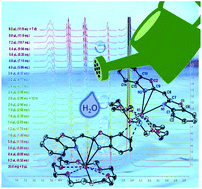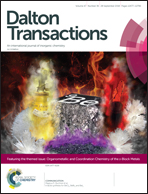Abstract
A series of new alkali metal complexes containing deprotonated bisheterocyclomethanide were synthesised and structurally as well as spectroscopically characterised. Starting from the neutral bis-(benzoxazol-2-yl)methane ({NCOC6H4}2CH2), the complexes were obtained by facile deprotonation of the methylene bridge with nbutyllithium (nBuLi) or potassium hydride. Each of the resulting complexes [({NCOC6H4}2CH)Li(OEt2)2] (1), [({NCOC6H4}2CH)K(thf)]n (2) and [({NCOC6H4}2CH)K(18-crown-6)]n (3) (n → ∞) was analysed in the solid state by single crystal X-ray diffraction and in solution by various NMR techniques. All the compounds show a nearly planar ligand with the alkali metal ion chelated by the two ring nitrogen atoms of the conjugated C3N2 moiety. Furthermore, water NMR titration experiments revealed that both compounds 2 and 3 are examples of water-stable reactive organo potassium compounds. Due to their hydrolysis stability, these complexes are under further investigations in deep eutectic solvents.

- This article is part of the themed collection: Organometallic and coordination chemistry of the s-block metals


 Please wait while we load your content...
Please wait while we load your content...